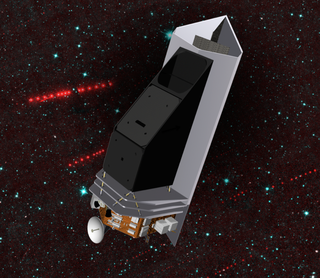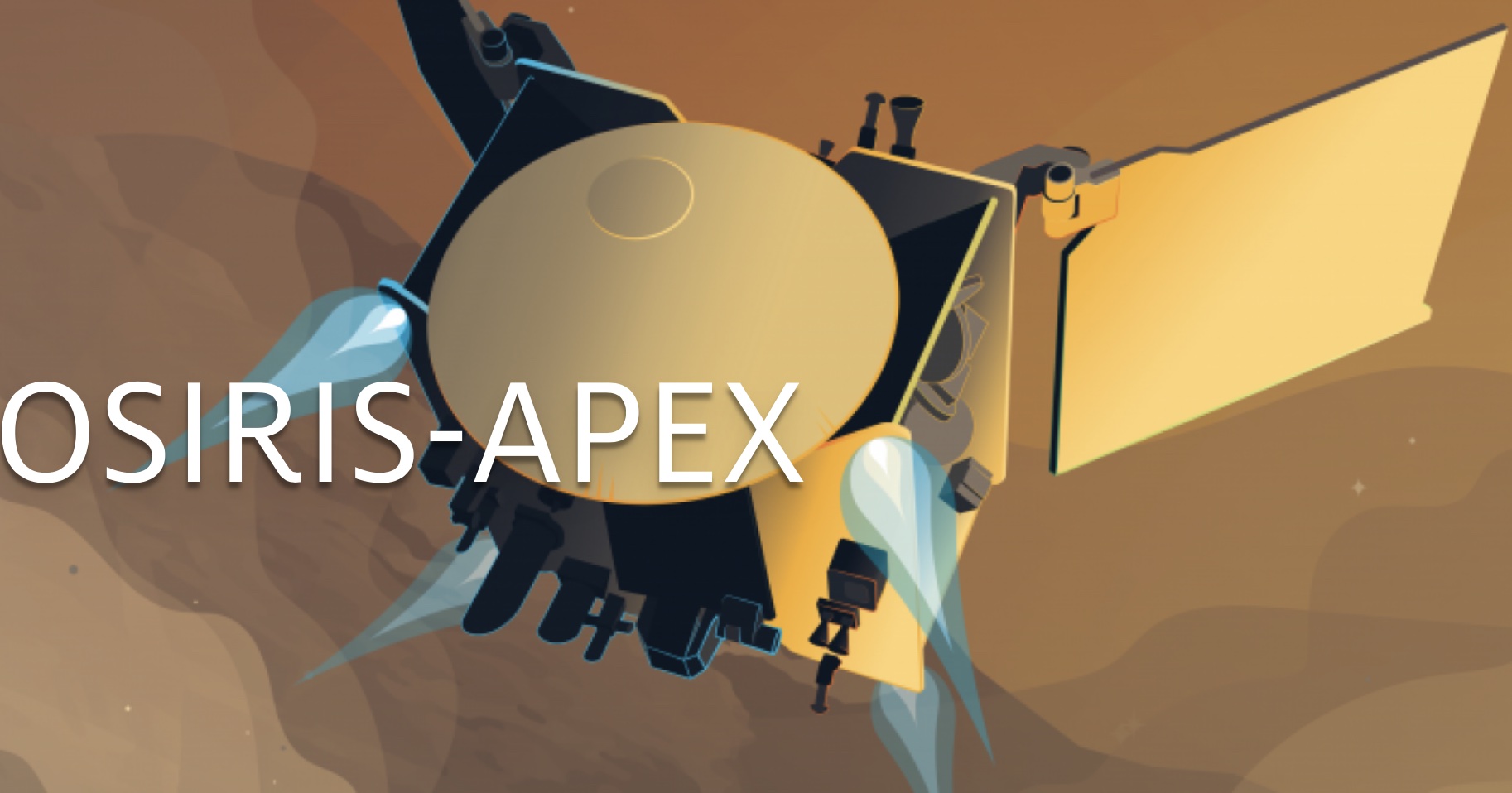On a near daily basis, Earth is impacted by meteoroids and even small asteroids, which typically burn up in the atmosphere producing shooting stars; however, we also know that Earth has been hit by much larger and more devastating objects. Luckily, impacts are one of the few natural phenomenon that we can actively defend against. To do so, we need to find, track, and characterize potentially hazardous objects (PHOs). In my work, I use radar observations to physically characterize asteroids and planetary surfaces. Additionally, I am building a radar laboratory in order to provide improved insights for radar analysis by studying radar scattering in a controlled environment.
Here I list active and past funded projects related to the applied planetary science of planetary defense.
Arecibo Observatory Planetary Radar Program
Project Summary
Period of Performance: 07/2019 – 03/2023
Funder: NASA Solar System Observations Program
Role: Institutional PI for USRA
Summary: The 305-meter William E. Gordon telescope at the Arecibo Observatory has studied the Solar System for over 50 years, and its S-band (2380 MHz, 12.6 cm) planetary radar system was arguably the world’s most powerful instrument for post-discovery orbital refinement and physical characterization of near-Earth objects. Arecibo radar observations have been critical for identifying hazards to Earth and have dramatically reduced the difficulty and cost of mitigation efforts by constraining the putative impactor’s size, shape, mass, spin state, composition, surface properties, binarity, and trajectory. The goal of the Arecibo planetary radar project is to 1) Provide precise astrometric measurements for trajectory prediction and assessment of the Earth impact hazard, 2) Characterize the sizes, shapes, spin states, and surface properties of the near-Earth object population, and 3) Prioritize observations of potentially hazardous objects and spaceflight accessible mission targets. Since the tragic collapse of the telescope, the priority of the project have been data archival and processing.
Peer-Reviewed Manuscripts
- Rożek, A. et al., including Rivera-Valentín, E. G., 2019. Shape model and spin-state analysis of PHA contact binary (85990) 1999 JV6 from combined radar and optical observations. Astronomy and Astrophysics, doi: 10.1051/0004-6361/201936302
- Taylor, P. A., Rivera-Valentín, E. G., et al., 2019. Arecibo radar observations of near-Earth asteroid (3200) Phaethon during the 2017 apparition. Planetary and Space Sciences, doi:10.1016/j.pss.2019.01.009
- Reddy, V., Sanchez, J. A., Bottke, W. B., Thirouin, A., Rivera-Valentín, E. G., et al., 2016. Physical Characterization Of ~2-m Diameter Near-Earth Asteroid 2015 TC25: A Possible Boulder From E-Type Asteroid (44) Nysa. Astronomical Journal, doi:10.3847/0004-6256/152/6/162.
Announcements and Notes
- Taylor, P. A., Rivera-Valentín, E. G., 2021. Fall of an icon: The past, present, and future of Arecibo Observatory. LPIB, 165.
- Virkki, A. K., et al. including Rivera-Valentín, E. G., 2019. Discovery announcement of binary system near-Earth asteroid 2016 AZ8. CBET 4593.
- Bhiravarasu, S. S., Rivera-Valentín, E. G., et al., 2018. Arecibo Radar Observations of Dwarf Planet 1 Ceres During the 2018 Apparition. Research Notes of the AAS, 2, 232, doi:10.3847/2515-5172/aaf815.
- Rivera-Valentín, E. G., Schmelz, J. T., 2018. Arecibo weathers the storm. Nature Astronomy, Comment, doi:10.1038/s41550-018-0394-3.
- Brozovic, M., et al. including Rivera-Valentín, E. G., 2017. (226514) 2003 UX34 binary asteroid. CBET 4353.
- Rivera-Valentín, E. G., Taylor, P. A., Virkki, A., and Aponte Hernandez, B., 2017. (163693) Atira Binary Asteroid System. CBET 4347.
Selected Conference Abstracts
- AponteHernandez, B., Taylor, P.A., Rivera-Valentín, E.G., O’Dell, M.O., 2021. A publicly accessible repository for Arecibo planetary radar observations of near-Earth asteroids. LPSC LII, Abstract #2174.
- Hickson, D. C., Virkki, A. K., Rivera-Valentín, E. G., 2021. Polarimetric analysis of archival Arecibo near-Earth asteroid radar observations. LPSC LII, Abstract #2593.
- Nolan, M. C., et al. including Rivera-Valentín, E. G., 2021. The heterogeneous population of near-Earth asteroids revealed by the Arecibo planetary radar. LPSC LII, Abstract #1860.
- Shepard, M. K., et al. including Rivera-Valentín, E. G., 2021. Asteroid (16) Psyche: A ferrovolcanic world? LPSC LII, Abstract #2201.
- Taylor, P. A., Rivera-Valentín, E. G., 2021. The legacy of Arecibo Observatory in planetary science. LPSC LII, Abstract #2179.
- Zambrano-Marin, L. F., et al. including Rivera-Valentín, E. G., 2021. Radar observations of near-Earth asteroid 2019 OK. LPSC LII, Abstract #2451.
- Aponte Hernandez, B., Rivera-Valentín, E. G., Taylor, P. A., 2020. Revisiting the relationship between near-Earth asteroid radar properties and taxonomic class. LPSC LI, Abstract #2940.
- Taylor, P. A., Rivera-Valentín, E. G., et al., 2020. Radar and optical observations of equal-mass binary near-Earth asteroid (190166) 2006 UP156. LPSC LI, Abstract #2333.
- Whittaker, E. A., Taylor, P. A., Rivera-Valentín, E. G., 2020. Uncertainty assessment of near-Earth asteroid size measurements from radar images. LPSC LI, Abstract #1446.
- Rivera-Valentín, E. G., et al., Radar and near-infrared characterization of near-Earth asteroid (163899) 2003 SD220. LPSC L, Abstract #3016.
- Taylor, P. A., Rivera-Valentín, E. G., et al., 2019. Radar and optical observations of equal-mass binary near-Earth asteroids (190166) 2005 UP156 and 2017 YE5. LPSC L, Abstract #2945.
- Taylor, P. A., Virkki, A. V., Rivera-Valentín, E. G., et al., 2019. Arecibo radar observations of potentially hazardous asteroids. Planetary Defense Conference.
- Virkki, A. V., Taylor, P. A., Rivera-Valentín, E. G., et al., 2019. The future and capabilities of Arecibo planetary radar system in 2019-2023. Planetary Defense Conference.
- Bhiravarasu, S. S., Rivera-Valentín, E. G., Taylor, P. A., Zambrano-Marin, L. F., Aponte-Hernandez, B., Marshall, S. E., 2018. Arecibo radar observations of dwarf planet Ceres during the 2018 apparition. AAS/DPS 412.04.
- Taylor, P.A. etal, including Rivera-Valentín, E.G., 2018 . Radar and infrared observations of near-Earth asteroid 3200 Phaethon. LPSC XLIX, Abstract #2509.
- Virkki, A. K., Taylor, P. A., Bhiravarasu, S. S., Howell, E. S., Lejoly, C., Nolan, M. C., Rivera-Valentín, E. G., 2018. Surface properties of space flight accessible near-Earth objects. LPSC XLIX, Abstract #2322.
- Zambrano-Marin, L.-F., Virkki, A. K., Rivera-Valentín, E. G., Taylor, P. A., 2018. Scattering law fits for dual polarization radar echoes of asteroids using Arecibo Observatory planetary radar data. LPSC XLIX, Abstract #2569.
- Farnocchia, D., Tholen, D.J., Micheli, M., Ryan, W., Rivera-Valentín, E. G., Taylor, P. A., Giorgini, J. D., 2017. Mass estimate and close approaches of near-Earth asteroid 2015 TC25. DPS #100.09.
- Howell, E. S., Lejoly, C., Taylor, P. A., Rivera-Valentín, E. G., et al., 2017. Arecibo radar observations of 41P/Tuttle-Giacobini-Kresak constrain the nucleus size and rotation. DPS #414.24.
- Rivera-Valentín, E. G., Taylor, P. A., Virkki, A., Bhiravarasu, S. S., Venditti, F., Zambrano-Marin, L. F., Aponte-Hernandez, B., 2017. Arecibo radar observations of near-Earth asteroids. DPS #112.09.
- Springmann, A., Howell, E. S., Harmon, J. K., Lejoly, C., Rivera-Valentín, E. G., Virkki, A., et al., 2017. Particle sizes in the coma of Comet 45P/Honda-Mrkos-Pajdusakova from Arecibo radar observations. DPS #305.06.
- Taylor, P. A., Virkki, A., Warner, B., et al., including Rivera-Valentín, E. G., 2017. Radar, optical, and infrared observations of equal-mass binary near-Earth asteroid (190166) 2005 UP156. DPS #204.02.
- Taylor, P. A., Howell, E. S., Zambrano-Marin, L. F., Rivera-Valentín, E. G., Virkki, A., 2017. Radar and infrared observations of binary near-Earth asteroid 5143 Heracles. LPSC XLVIII, Abstract #1961.
- Rivera-Valentín, E. G., Taylor, P. A., Rodriguez-Ford, L. A., Zambrano-Marin, L. F., Virkki, A., Aponte-Hernadez, B., 2016. Radar observations of near-Earth asteroids from Arecibo Observatory. DPS/EPSC #329.10.
The Planetary Radar Investigation, Demonstration, and Exploration (PRIDE) Laboratory
Project Summary
Period of Performance: 09/2019 – 09/2023
Funder: NASA Early Career Fellowship
Summary: Planetary radar observations are invaluable for post-discovery characterization of near-Earth objects (NEOs) by providing precise line-of-sight astrometry, direct measurement of size and binarity, and information on surface geology, composition, density, spin, and 3-D shape. Both ground- and space-based radar observations have enabled the surface exploration of planetary bodies, such as Mars, and the search for hidden volatile resources essential for in-situ resource utilization (ISRU), such as ice in permanently shadowed lunar craters. Several phenomena have been discovered via radar, including a potential relationship between polarization and asteroid taxonomy and coherent backscatter from ices; however, insights into such phenomena have largely relied on models, which are not well constrained due to the deficit of laboratory measurements.
The goal of the PRIDE lab is to enhance the scientific return from planetary radar observations of Solar System objects thereby improving the characterization of NEOs and other planetary surfaces. The primary objectives of the lab are to:

1. Investigate radar scattering processes in a controlled laboratory setting,
2. Demonstrate the efficacy of radar data analysis techniques, and
3. Explore new phenomena as well as radar return over a broad parameter space.
Development of the PRIDE Lab is funded by NASA through the Early Career Fellowship program under Grant No. 80NSSC19K1645.
Conference Presentations
- Muñiz Negrón, G. A., Rivera-Valentín, E. G., Medina Sánchez, R. H., 2020. Development of a small profile Doppler radar for laboratory studies of asteroids. 51st LPSC, Abstract 1585
Collaborators
- Paul Abell, NASA JSC
- Lance Benner, JPL/Caltech
- Sriram Bhiravarasu, Indian Space Research Organization
- Rafael H. Medina Sanchez, University of Puerto Rico Mayagüez
- Catherine Neish, Western Ontario University
- Michael Nolan, Lunar and Planetary Laboratory, University of Arizona
- Bradley Thompson, University of Tennessee Knoxville
- Anne Virkki, University of Helsinski
Mission Involvement
 NEO Surveyor
NEO Surveyor
I am a member of the Science Investigation team of NASA’s NEO Surveyor mission. NEOSM, formerly NEOCam, is a planetary defense mission intended to discover and characterize NEOs with the specific goal of attaining the congressional mandate of cataloging at least 90% of asteroids 140 m in size and larger. I am in the radar science group of the team. Our objective is to provide sufficient ground-based radar-derived NEO sizes for calibration and testing of the instrumentation and techniques used by the mission. Find out more about NEOSM here!
 OSIRIS-APEX
OSIRIS-APEX
I am the Planetary Defense Lead for the OSIRIS-REx extended mission, named OSIRIS-APEX. The spacecraft will rendezvous with the asteroid Apophis after its dramatic close approach to Earth on Friday April 13, 2029. The mission aims to characterize in detail Apophis, and in particular to study the changes induced after the very close Earth approach. My role is to interface between NASA’s Planetary Defense Coordination Office and the mission, as well as to provide guidance for the key measurements needed to inform planetary defense strategies.

